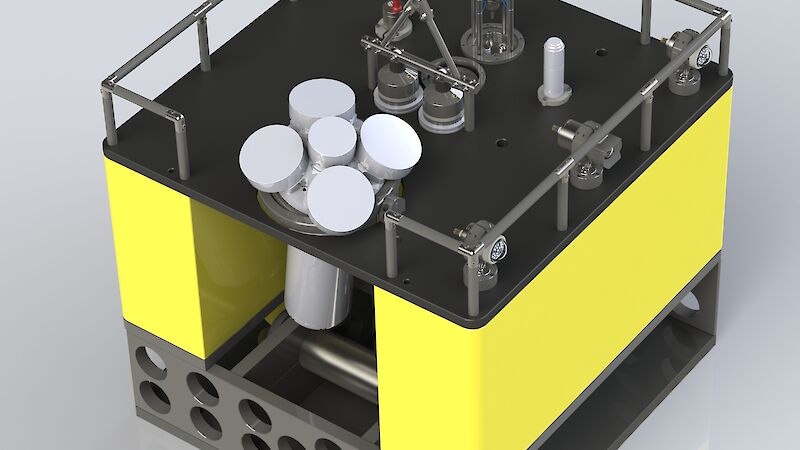New video camera moorings deployed on the Southern Ocean sea floor for up to a year, could help solve the mystery of where Antarctic krill go during winter, and how they use their deep ocean habitat.
Australian Antarctic Division krill biologist, Rob King, said three ‘Krill Observational Moorings for Benthic Investigation’, or KOMBIs, would be deployed at depths of between 300 and 1500 metres for 12 months, to see if and when the crustaceans visit the sea floor.
“We don’t know where the krill go during winter when the sea-ice freezes over, and the shield of sea ice cover makes it difficult for us to study and understand their movements,” Mr King said.
“In the summer, we know krill feed on phytoplankton at the ocean surface, but they may also raid the sea floor for sunken particles.
“This will be the first study to quantify how krill use the sea floor and the seasonal sea ice area across space and time, and it will allow year-round monitoring of krill in some of the main foraging grounds for whales, seals and penguins off East Antarctica.”
The moorings have a sideways looking video camera that films the sea floor for three to five minutes, every five hours. They also carry instruments to measure ocean properties and currents, and an upward looking ‘echosounder’ that will detect krill swimming down to the sea floor, returning to the surface or just passing by.
“The video will allow us to identify the krill species and the time of day or year they appear, while the echosounder will provide an estimate of krill biomass, their distribution and the speed with which they descend and ascend to and from the surface,” Mr King said.
“This work will provide information to improve management strategies for the expanding krill fishery, and our understanding of how foraging grounds for krill predators are formed.”
The moorings will be deployed off Mawson research station between January and March 2021, using the RV Investigator, in areas known to contain krill.
The video cameras will begin recording in darkness, to capture any bioluminescent activity, before the 1000 lumen white LED lights switch on to attract the krill.
“Previous work with deep sea cameras has shown that krill often arrive within two minutes of the lights switching on,” Mr King said.
The lights will then switch off and the camera will have time to record any escape response signalling by krill.
About 87 hours of vision will be recorded over the year and stored within the camera until the mooring is retrieved.
To retrieve the mooring an acoustic signal from the ship will release the instrumentation from weights anchoring it to the sea floor. Once at the surface, a satellite beacon will send the mooring’s location to the ship.
The design, build and testing of the KOMBIs is being done by Tasmanian company, Metocean Services International, with input from Mr King and the Antarctic Division’s Technology and Innovation team.

